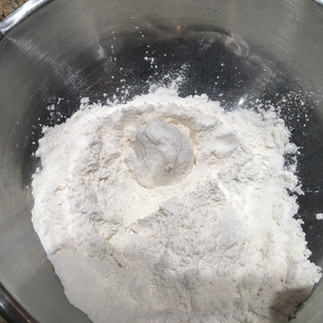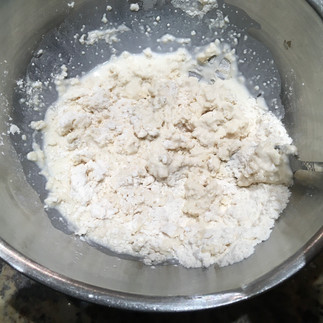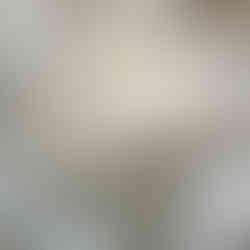Biscuits -- I need a rematch!
- The Culinator (aka Jim)
- Nov 25, 2021
- 3 min read

My mentor, Julia Child, wrote "Like pie crusts, biscuits are a measure of a baker's talents and a pastry in which bakers take particular pride."
**sigh**
My first attempt at biscuits, other than the Pop 'n' Fresh kind, did not produce a very lengthy measurement of my talents. If I was to measure my baking talent based upon these biscuits I'd definitely be using nothing larger than the millimeter scale on the ruler because I'm pretty sure I hadn't reached even the centimeter point. I suppose it could be worse. After all, the final result were definitely edible (especially when covered with fresh sausage gravy) and the were thicker and fluffier than a cracker.
Julia had also warned me that the secret to "a good biscuit hand is to have a light touch and restraint" and that the "golden rule with biscuits is to stop doing whatever you're doing to them two beats before you have to." I apparently used more of the ham fist technique than the light touch.
The recipe for these biscuits seemed simple enough:
- 2 cups all-purpose flour
- 1 Tbs baking powder
- 1 tsp salt
- 1/3 cup solid vegetable shortening
- 1 cup of milk
The process also seemed pretty simple -- all of the dry ingredients went into a mixing bowl and were mixed with a fork. The photo isn't very exciting, three white powdery ingredients, but since I took it I thought I should share it with you!
Next, just to add some color to the mixture (just kidding), the shortening was added to the flour mixture and rolled around enough to coat the mixture. That's supposed to help reduce the messiness a little (Yeah, right. I think I need to get a white apron for my baking projects because the black one ends up looking like I've been in a battle with a bag of flour.) because to mix the shortening in I had to rub the flour and shortening together with the tips of my finger to make "crumbs."
It was an interesting process, I've never done or seen anything like it before, but it pretty much worked out. I kept pinching and rubbing the blobs of shortening with flour until everything was pretty well mixed together. In order to make things sticky again -- why is it that everything about working with dough seems to be sticky? -- it was time to add the milk. The milk was poured in and stirred with a fork until I ended up with a sticky blob of dough.

After I covered the countertop with flour, the blob of dough went from the mixing bowl onto the counter to be kneaded. Julia said I was to knead the dough ten times but "no more" even if I was tempted. I counted, really! Then it was time to pat out the dough and cut it into 2-inch circles. I didn't have a biscuit cutter (hey Santa, are you reading this?) but I did have a 2-inch cup that seemed to work nicely. Hmmmmm, maybe the cup was the reason my biscuits were flakier?
The biscuit patties went onto a cookie sheet (BTW -- why is it called a cookie sheet and not a biscuit sheet?) and the biscuits were brushed with melted butter before going into the oven. Julia mentioned that you can have the sides of the biscuits touch if you want soft sides and keep them apart if you want crispier sides. I'm new at this so I put them close to each other but not touching.
The final step was to bake in the preheated oven at 425F for 12-15 minutes until they turn golden. That part seemed to work out just fine. While the biscuits were baking I also quickly made some sausage gravy that turned out pretty good (you'll have to look at one of my earlier posts for that one -- or let me know and I'll post the instructions for the basic white sauce).
That's the whole story -- I'm not sure which step I need to improve on but I'll try again and next time those biscuits will be thick and fluffy...maybe. Have you mastered baking soda biscuits? If so, let me know your tips and tricks so I can figure this out. In any case, a good sausage gravy does wonders for even a bad biscuit.
Good luck and bon appetit!
























Comentários